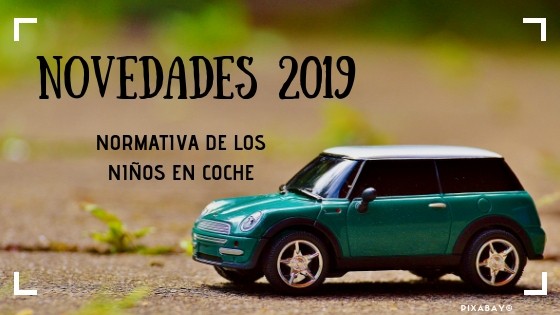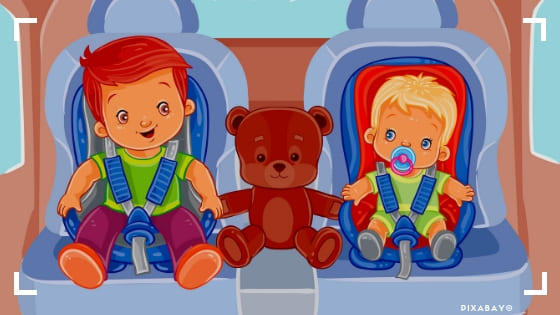Can You Rent a Car Seat in Spain
- Home
- News and offers
- Regulations about child car seats, new in 2019

Would you like to be aware about new regulations for child car seats issued by DGT (Spanish traffic authorities) in 2019? ✅ Are you new, -to driving or to parenthood- and don't know very much about the guidelines to drive with your baby? ✅ Go on reading this post and we will inform you.
WHY IS IMPORTANT TO KNOW REGULATIONS ABOUT CHILD CAR SEATS?
In past years regulations about child car seats have gone through several changes up to the current legislation: R129 I-Size. The aim behind all these changes is to have safer babies in the car.
Car accidents are the first cause of death for those under 14 years old. Child car seats and similar systems have reduced the number of deaths in a 75% and the number of injuries in a 90%. So, it's just common sense, legislation becomes stricter every year so those figures can be reduced even more. It is very important to follow all these rules and restrictions, not just to avoid fines but to save your children's life.
TYPE OF REGULATIONS REGARDING CHILD CAR SEATS AND MAIN DIFFERENCES:
In Spain there are currently two regulations regarding safety measures for child car seats: the R129 i-Size since 2013 and the ECE R44/04 established in 1982. These are the main differences:
- Regulation ECE R44/04 classifies child car seats in groups (0/0+I/II/III) based in child age and approximate weight, but i-Size do it based in child height and allows for every manufacturer to decide the minimum height accepted for every model of baby seat produced.
- An additional difference is the use of child car seats in opposite direction to car movement, where i-Size allows for seats in this position only for children up to 71 cm (around 15 months old) while ECE R44/4 says it is compulsory up to 9 kg of weight (around 12 months old). In fact, experts recommend to put always children up to 4 years in this position if possible.
- Crash tests under i-Size regulation are made with more advanced dummies and with more updated criteria than those under ECE R44/4
- Only under I-Size regulation is compulsory the use of Isofix latches.
.jpg)
ALL YOU NEED TO KNOW ABOUT i-Size REGULATION:
The most updated regulation regarding safety of children on cars is the i-Size. Its implementation has taken place in three phases allowing for car and baby seat manufacturers to adapt in several steps.
By now both regulations will go on being valid for a few more years. It is thought the ECE R44/04 will stop being valid from 2021.
The three phases of implementation of the new regulation are:
-
FIRST PHASE:
Includes all seats for babies since just born up to when they have 105 cm of height. These baby seats must be attached with Isofix, with the only exception of seats for children of 15 months old that can be strapped with the car seatbelt.
-
SECOND PHASE:
Includes all seats for children with height over 100 cm, the boosters must have a rigid back to improve the child protection in case of accident.
-
THIRD PHASE:
Planned to update all child car seats from ECE R44/04 regulation without Isofix latch, so an obligation to put all baby seats on the opposite direction for children under 80 cm of height or under 15 months old, can be made mandatory.
REGULATION OF CHILD CAR SEATS FROM DGT IN 2019:
We have been reviewing the regulation for baby seats/car manufacturers, but regarding drivers/parents, what is the legislation according to DGT?
DGT regulations enacted in 2015 says all child car seats, boosters, etc must be placed in back seats when the children's height is equal or under 135 cm, but there are some exceptions:
- When the car only has two seats
- When all back seats are already occupied by other children
- When there's no possibility of placing the child car seats in the back seats.
If any of this exception applies the child could be seated in the front seats but always in a baby seat in accordance with his/her weight and size. If the seat is on the same direction as the movement of the car there must be an active airbag. In case the seat is on opposite direction the airbag must be inactive. Lateral airbags may be kept active.

WHAT IS THE COST OF A CHILD CAR SEAT IN CAR HIRE?
If you're travelling with children and plan to hire a car, you can not forget to ask for a child car seat adapted to your children needs.
All car hire companies offer the option of hiring a child car seat but you can find a broad offering regarding options and prices. You can find child car seats for a cost from 4,5€ to 16€ per day per seat.
If you want to avoid that extra cost you've got two options: you can bring your own from home or you can choose a car hire company with an all-inclusive car hire service: Espacar Rent a Car.
Espacar offers all the child car seats you need for free. The family friendly offering from Espacar provides you with child car seats for zero euros per day. The only limit is you can not ask for more seats than spaces available in the car hired.
This is all the information you might need regarding regulations for child car seats according to DGT in 2019. We hope you find this post useful.
For additional information about driving in Spain keep on coming to our blog.
Back
Can You Rent a Car Seat in Spain
Source: https://www.espacar.com/news-and-offers/regulations-about-child-car-seats--new-in-2019---espacar
0 Response to "Can You Rent a Car Seat in Spain"
Post a Comment